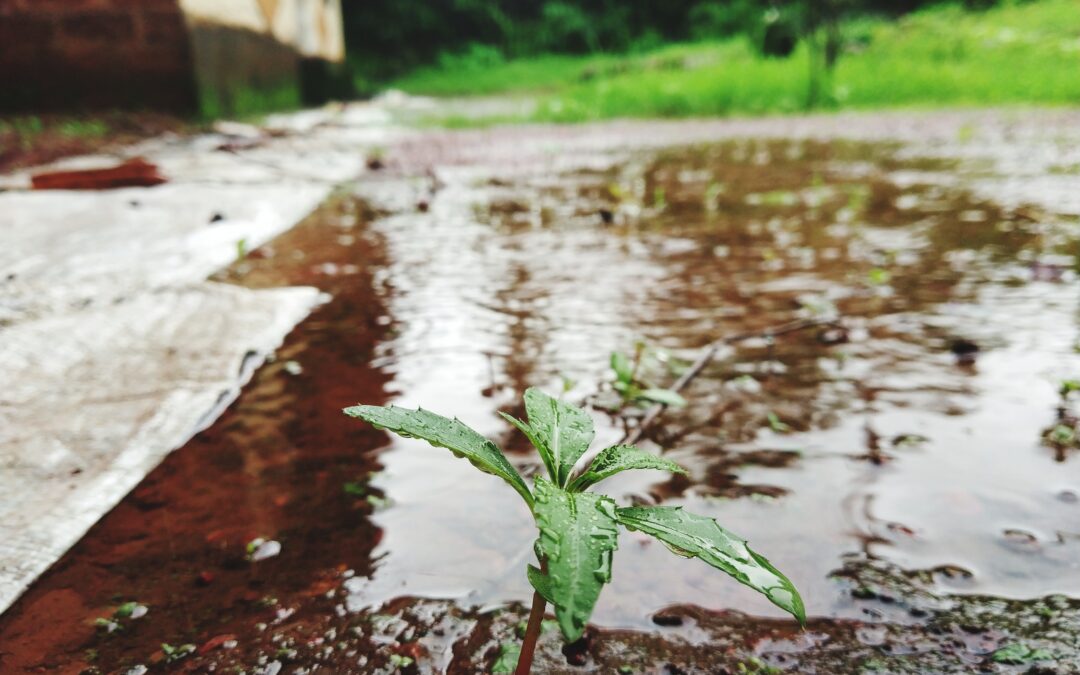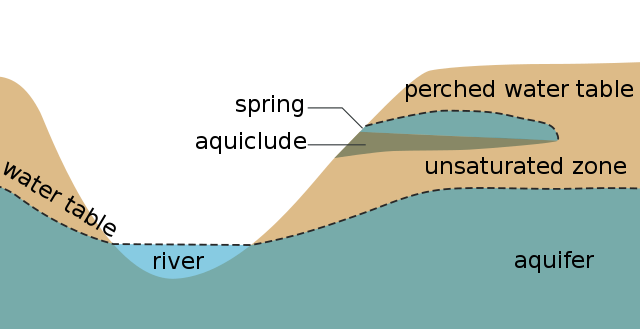Water is something we can’t live without, but when it lies just below the surface of your New York property, it can cause significant problems. High water tables, common in many areas of New York, can threaten the structural integrity and value of homes and businesses. Issues like basement flooding and foundation damage are prevalent in regions such as Nassau and Suffolk counties, especially in cities like East Meadow, Levittown, and Patchogue. These problems are intensified by rainfall, geology, and human activities, leading to persistent water damage and increased maintenance costs.
This article will help you understand New York water table depths and how they affect properties so that you can protect your property if you live in an area with a high water table. Whether you’re a homeowner with a damp basement or a business owner planning new construction, understanding high water tables is crucial for safeguarding your investments and ensuring long-term resilience.
Experiencing Water Damage Issues in Brooklyn, Queens, or Long Island? Call on Zavza Seal for Proactive, Tailored Solutions Backed by a Solid 30-Year Warranty!
Get Your Free Assessment Today! Call (631) 980-1800 Now!
What is a Water Table?
A water table is the upper level of an underground surface where the soil or rocks are permanently saturated with water. This level fluctuates based on several factors such as rainfall, drought, seasonal changes, and human activities like groundwater extraction.
Key Characteristics:
- Saturation Zone: The water table marks the boundary between the unsaturated zone above, where soil and rocks contain air and water, and the saturated zone below, where all spaces between soil particles are filled with water.
- Fluctuation: The depth of the water table can vary greatly over time and location. It rises during periods of heavy rainfall and falls during dry periods.
As a property owner or contractor in New York, understanding New York water table depths in your area and whether or not your property is being affected plays a critical role in effective water management, construction planning, and mitigating potential damage to your home or business.
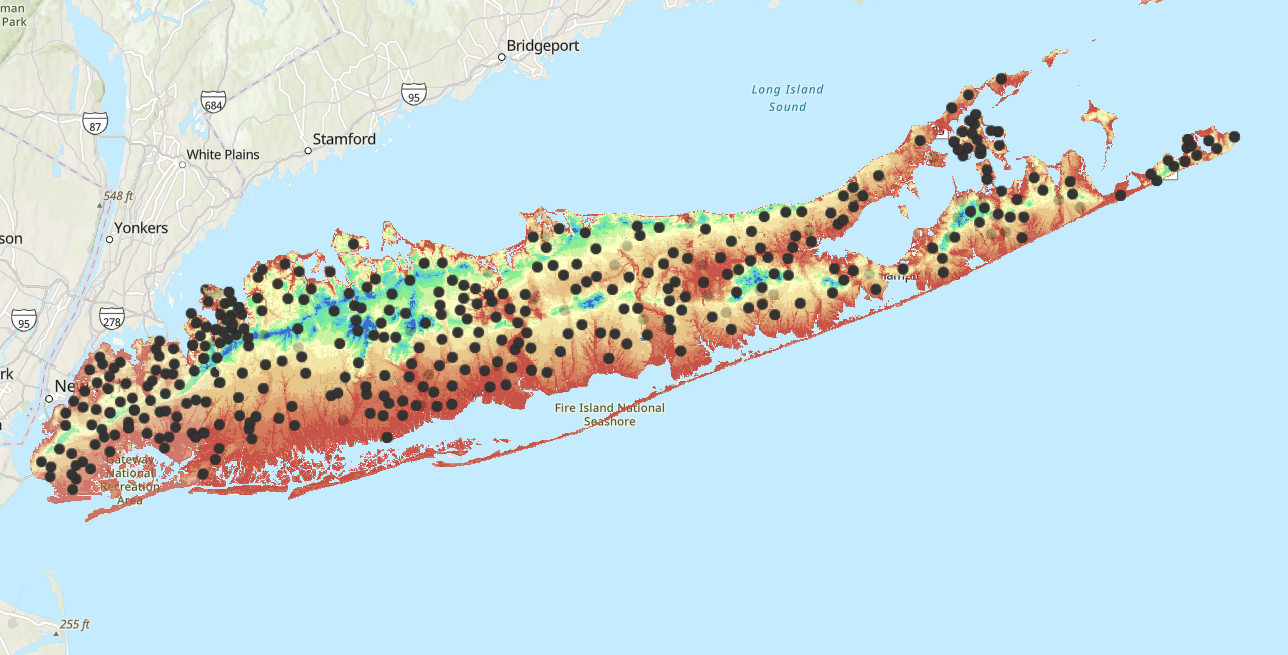
New York Water Table Depths: Known Problem Areas in Nassau and Suffolk Counties
High water tables in Brooklyn and other parts of New York have been causing problems with basement flooding and damage to building foundations since fall of 1975. In regions with a high water table, groundwater can easily reach the surface, potentially leading to issues like basement flooding and soil saturation. Climate change is projected to make all of these problems worse by increasing the frequency and intensity of rainfall, further raising groundwater levels, and heightening the risk of water damage.
Here are some of the main high water table affected areas of Nassau and Suffolk Counties:
Suffolk and Nassau County Areas with Known Problems with High Water Tables
- East Meadow: Known for its flat terrain and poor drainage, East Meadow often experiences high water tables, particularly after heavy rains or snowmelt. The area’s proximity to various creeks and wetlands exacerbates the issue.For more information about foundation problems in East Meadow, NY, click here.
- Levittown: As one of the first mass-produced suburbs, Levittown was built on land with high water tables. Homeowners frequently deal with basement flooding, and moisture issues due to the shallow groundwater. For more info about foundation problems in Levittown, NY, click here.
- Merrick: This coastal community is susceptible to high water tables, especially during periods of heavy precipitation. The proximity to the South Shore bays increases the groundwater level, causing frequent waterlogging and drainage problems. For information about foundation problems in Merrick, NY, click here.
- Babylon: Known for its rapid growth in the last decade, Babylon faces significant issues with high water tables, particularly in low-lying areas. This results in frequent basement flooding and structural challenges for homeowners. To learn more about foundation problems caused by water damage in Babylon, NY, click here.
For more detailed information on the groundwater conditions in Nassau and Suffolk counties, visit the U.S. Geological Survey (USGS) or the Nassau Suffolk Water Commissioners Association (NSWCA).
Get a Free Assessment and Safeguard Your Home!
Call (631) 980-1800 Now!
Geological Factors Contributing to High Water Tables
New York water table depths, in areas where the water table is high enough to be a problem for structures, can cause significant issues for residential and commercial properties. But what geological factors contribute to high water tables?
Here are some of the key factors:
| Geological Factors | Description |
|---|---|
| Geological Formations |
|
| Topography |
|
| Soil Composition |
|
| Proximity to Bodies of Water |
|
| Hydrogeology |
|
| Human Activities |
|
Understanding these factors can help in planning and implementing effective water management strategies to mitigate the risks associated with high water tables.
High Water Table-Induced Foundation Problems
High water tables can significantly impact residential foundations by exerting hydrostatic pressure, which can lead to various structural problems. This pressure builds up when groundwater levels rise, pushing against foundation walls and floor slabs.
Over time, this can result in several detrimental effects:
- Foundation Shifting: Groundwater can exert pressure against the foundation, causing it to shift. This can lead to uneven settling and structural instability.
- Cracking and Fracturing: The added stress from a high water table can cause the foundation to crack or fracture, potentially leading to significant structural damage.
- Bowing and Shearing: Unstable soils saturated with water can move or shift, causing foundation walls to bow, shear, or even tip.
- Basement Flooding: A high water table can lead to water seeping into basements, causing flooding and water damage which are costly to repair.
- Increased Humidity and Mold: Even if the groundwater does not cause direct structural damage, it can increase the humidity levels, leading to rust, bacteria, and mold growth.
- Foundation Collapse: In severe cases, the pressure from a high water table could strain the foundation to the point of collapse, endangering the entire structure.
High Water Table-Induced Basement Problems
Basements are particularly vulnerable to the effects of high water tables due to their location below ground level, where water pressure is naturally higher. The presence of a high water table can lead to several issues:
- Basement and Crawl Space Flooding: When the groundwater level rises above the basement floor, water can seep through cracks and joints, leading to flooding. This water ingress makes the basement damp and promotes mold growth.
- Mold and Mildew Growth: The damp environment created by high water tables is ideal for mold and mildew. These fungi thrive in moist conditions and can quickly spread on walls, floors, and other surfaces.
- Increased Humidity: Even if the water table does not directly cause visible water damage, it can raise the humidity levels in the basement. This increased humidity can lead to rust, deteriorating materials, and further mold growth.
Addressing these issues often involves improving basement waterproofing, ensuring proper drainage around the foundation, and possibly installing dehumidifiers or sump pumps to control moisture levels.
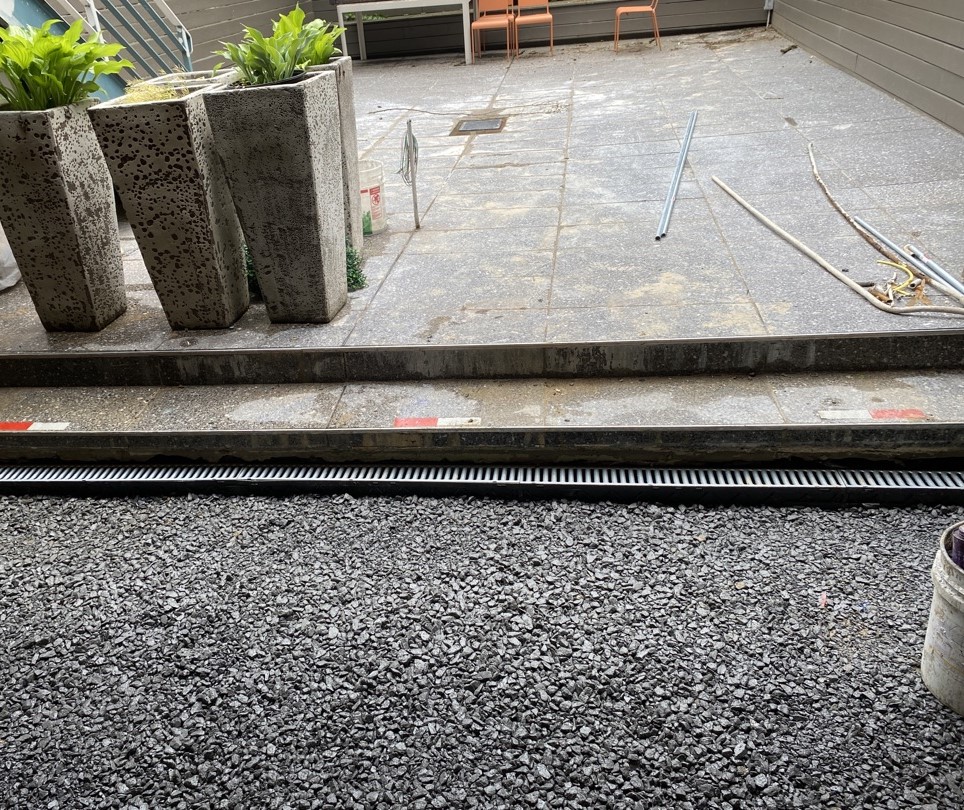
Protecting Your New York Property Areas with High Water Table Depths
To mitigate the risks posed by high water tables, there are several ways you can waterproof your basement and foundation in high water table areas to mitigate damage.
Here’s some of the most effective ways to waterproof your home or business to combat high water table problems:
French Drains
French drains offer a reliable way to protect your foundation by effectively managing groundwater. By digging a trench around the foundation, lining it with gravel, and placing a perforated pipe within the trench, French drains collect and divert groundwater away from the foundation, reducing hydrostatic pressure and preventing water-related issues.
Sump Pumps
Sump pumps provide a proactive solution to prevent basement flooding by automatically removing water that accumulates at the lowest point of your basement or crawl space. Installed in a sump pit, the pump activates when water reaches a certain level, efficiently pumping it out and away from the foundation.
Foundation Waterproofing
Foundation waterproofing is crucial for protecting it from water infiltration. This involves applying membranes or sealants to the exterior or interior of foundation walls. Exterior waterproofing typically requires excavation around the foundation to apply a waterproof barrier.
Proper Insulation:
Selecting insulation materials that are resistant to moisture is crucial for foundation wall insulation in high water table areas. Closed-cell foam insulation or rigid foam boards are effective choices as they provide thermal resistance and resist moisture infiltration, helping to maintain a dry and comfortable basement environment.
By understanding these processes and implementing appropriate mitigation strategies, homeowners can protect their properties from the damaging effects of high water tables. Regular maintenance and the use of impermeable insulation like closed-cell spray foam are essential in ensuring long-term protection against moisture-related issues.
For expert mold testing and remediation services in Brooklyn, Queens, and Long Island, reach out to one of our experts today for your free inspection and tailored quote!
Call Zavza Seal Now at (631) 980-1800!
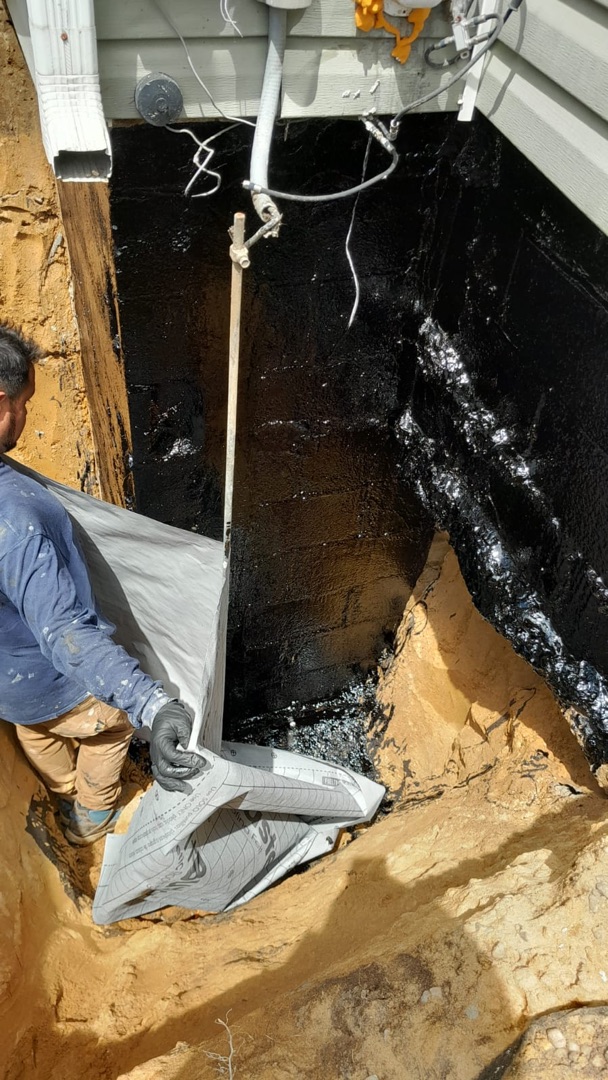
Our Case Studies: Real-World Successes by Zavza Seal
Bluestone Step Facade Repair Case Study
Location: Long Island, New York
The Problem:
The homeowners were facing significant issues with their bluestone step facade, which had suffered extensive damage due to Long Island’s harsh climate, wear and tear, and freeze-thaw cycles. They observed broken and uneven bluestone treads, discoloration and staining on the bluestone surface, and spalling (flaking) of the bluestone surface. These issues not only detracted from the home’s curb appeal but also posed safety hazards.
The Solution:
To address these concerns, Zavza Seal LLC implemented a comprehensive restoration plan:
- Step Assessment and Planning: Conducted a detailed evaluation of each step to determine the extent of damage.
- Bluestone Repair: Utilized specialized epoxy or mortar to repair cracked or broken bluestone pieces.
- Stone Replacement: Replaced severely damaged or missing bluestone treads with high-quality matching bluestone pavers.
- Surface Cleaning and Restoration: Employed a multi-step cleaning process to remove stains, grime, and discoloration, restoring the natural beauty of the bluestone.
- Stone Sealer Application: Applied a high-performance stone sealer to protect the bluestone from future staining and the damaging effects of freeze-thaw cycles.
Outcome:
The expertly completed bluestone step restoration transformed the homeowner’s entrance. The steps were now level, safe, and structurally sound, with the natural beauty of the bluestone restored and protected from future damage.
Check out our case study for this project by following this link.
Basement Waterproofing Case Study
Location: New York City
The Problem:
The client experienced persistent basement leaks, with damp patches appearing on basement walls after heavy rain or snowmelt. This raised concerns about mold growth and structural damage.
The Solution:
After a thorough inspection by the Zavza Seal Team, which identified visible water seepage, minor cracks on basement walls, and inadequate window well drainage, a comprehensive waterproofing solution was implemented:
- Exterior Foundation Waterproofing: Excavated an 8 feet deep and 14 feet long trench to expose the foundation wall, followed by the application of a high-quality waterproofing membrane to create a watertight barrier.
- Crack Repair: Sealed identified cracks with appropriate materials to prevent further water infiltration.
- Window Well Drain Installation: Installed two new window well drains to improve water collection and prevent pooling around the foundation.
Outcome:
The project was completed efficiently within two days. The client expressed high satisfaction with the professionalism, efficiency, and expertise of the Zavza Seal Team.
Check out our case study on this project here.
Why Choose Zavza Seal for Home Protection?
With over 20 years of experience, Zavza Seal stands as a leading authority in mitigating and repairing issues caused by high water tables in New York. Our team combines extensive training with deep expertise to deliver solutions that protect your property from water damage, foundation issues, and more. We pride ourselves on providing high-quality materials, comprehensive solutions, and unmatched customer satisfaction.
Choosing Zavza Seal for your waterproofing and foundation repair needs ensures:
- Expertise and Experience
- High-Quality Materials
- Comprehensive Solutions
- Customer Satisfaction
- Timely and Efficient Service
- Proven Track Record
- 30-Year Warranties on All Our Work
New York Water Table Depths and Home Protection: Final Thoughts
Understanding the dynamics of New York water table depths is crucial for protecting your home or business from potential water damage. High water tables, particularly in areas like Nassau and Suffolk counties, pose significant risks to the structural integrity of properties, leading to basement flooding, foundation damage, and increased maintenance costs. By gaining insights into the causes, effects, and mitigation strategies, property owners can take proactive steps to safeguard their investments.
Related Blog Posts:
- Effective Rainwater Management Techniques for Protecting Your Foundation
- Buying a House with Foundation Problems and the Seller Won’t Pay?
- The Importance of Professional Foundation Repair and Waterproofing
- Do All Cracks Mean Foundation Problems?
- Don’t Ignore the Warning Signs: Cracked Foundation Repair
Get A Free Estimate

